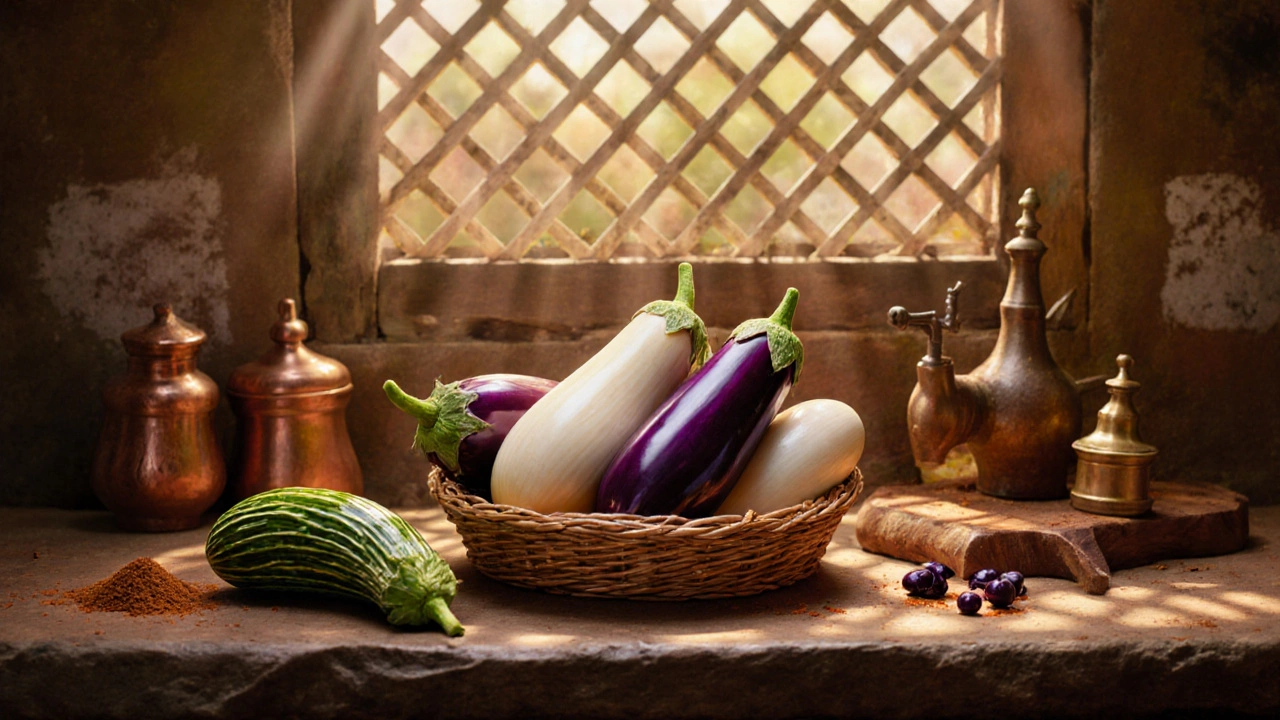Explore why Brinjal (eggplant) is crowned the king of vegetables in India, its top varieties, growing tips, nutritional benefits, and iconic recipes.
Eggplant India: Growing, Care, and Best Varieties for Indian Gardens
When you think of eggplant, a versatile, purple-skinned vegetable widely grown across India for its rich flavor and hardy nature. Also known as brinjal, it's a staple in curries, stir-fries, and pickles from Kerala to Punjab. Unlike in some countries where it’s treated as a novelty, eggplant in India isn’t just a crop—it’s part of daily cooking, family traditions, and local markets. You’ll find it in every season, but getting it to thrive? That’s where most gardeners struggle.
Successful eggplant growing in India depends on three things: climate, soil, and variety. It loves warmth—temperatures between 22°C and 30°C are ideal. Too cold, and the flowers drop. Too hot, and the fruit turns bitter. It needs well-drained soil rich in organic matter, which is why adding compost or aged cow dung works better than chemical fertilizers. And here’s the key: not all eggplants are the same. In India, you’ll find long, slender varieties like Purple Long, a popular choice in South India for its tender flesh and quick harvest, round ones like Pusa Purple Cluster, a high-yielding hybrid developed for North Indian conditions, and even green-skinned types like Punjab Green, a disease-resistant favorite among small farmers. Each has its own rhythm, and choosing the right one for your region makes all the difference.
Many gardeners treat eggplant like a high-maintenance plant, but it doesn’t have to be. It needs consistent water—not too much, not too little. Drip irrigation helps, especially in dry states like Rajasthan or Maharashtra. Mulching with dry grass or coconut husk keeps the soil cool and cuts down on weeds. And don’t forget pests—aphids, fruit borers, and spider mites love eggplant. Neem oil spray every 10 days during flowering is a simple, natural fix that works better than chemicals. The best part? You can start harvesting in as little as 60 days if you plant during the right season—usually after the monsoon or in early spring.
What you’ll find in the posts below isn’t just a list of tips. It’s a collection of real experiences from Indian gardeners who’ve cracked the code on eggplant success. You’ll learn what soil amendments actually work here, which companion plants keep pests away, and how to avoid the mistakes that ruin half the harvest. Whether you’re growing in a backyard, balcony, or small farm plot, the advice here is practical, tested, and made for India’s weather, soil, and growing habits.
